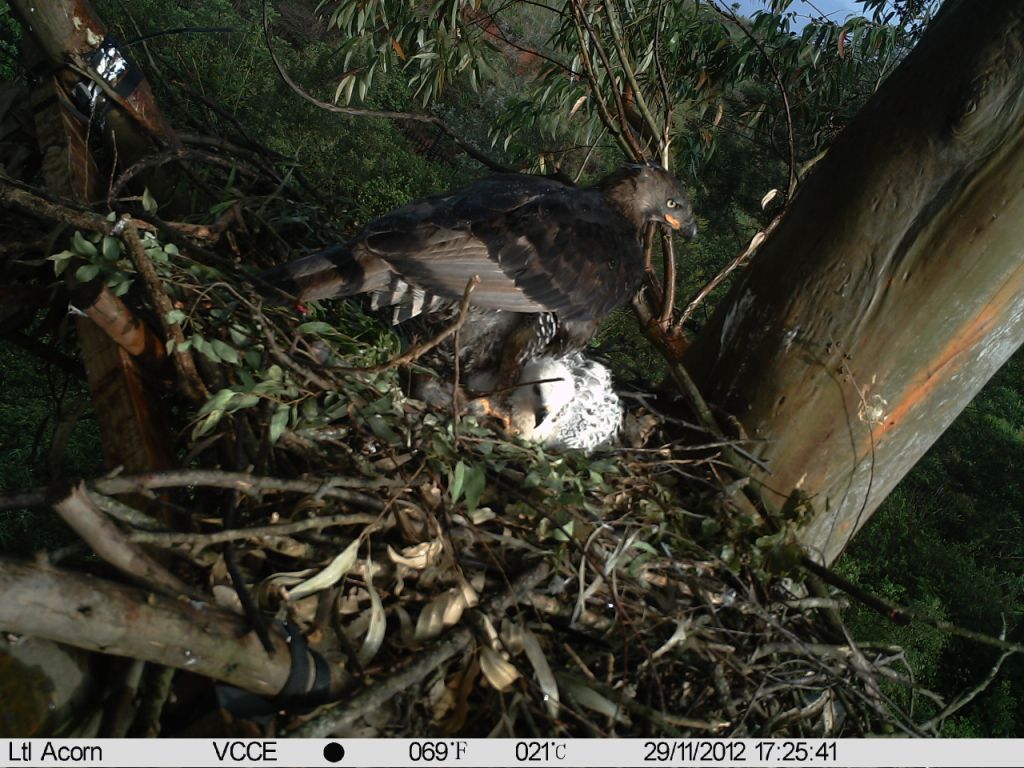I was invited to help with a very significant event for
Morgan Pfeiffers research on the Mkimbati Cape Vulture colony. Months of preparations went into this capture - including habituating vultures to the trap and rallying all the necessary personnel
to converge deep in the Transkei for three days. The University team comprised
of Morgan, Meyrick, Minke, Glen and myself.
We also had Dana come from her post at Oribi Gorge, a post-doc starting research on vulture genetics, and
Sonya, a volunteer helping Dana with her work. Kerri and Walter, who operate the vulture conservation
centre VulPro, provided their years of expertise to the operation.
The goal was to fit six Cape Griffons (Gyps coprotheres) with satellite telemetry and 40 with patagial
wing tags. The satellite tags would be used to investigate the foraging patterns over
the pastorial landscape, and wing-tags to see how birds associate at the breeding
colony, colony fidelity, and more general home range re-sightings.
At dawn of day 1, the first ten vultures to enter the trap
were shut in within an hour of sunrise. 0545!
The birds waited calmly in the trap, which doubled as a safe holding
pen, for the morning. Individual birds
were removed from the trap and processed on top of a vulture transport
crate before being released. The ‘processing’ involved a 10 to 20 minute procedure collecting a variety of data - affixing
tags and rings, taking measurements, photos and samples.
The plethora of sampling included drawing blood; a drop here
for DNA sexing tests, and there for blood glucose. Larger volumes were measured
for blood toxin and poison screening. To
obtain serum, 1ml sampled were spun in a centrifuge, and the plasma separated,
which needed to be frozen within the hour.
And a 4x4 was continuously ferrying samples the 20 minute dive on a
muddy and grassy track to the HQ freezer.
While the first morning was a great success, with five of
the satellite transmitters attached, we were unable to catch more vultures on the
following days. An opportunity to do another capture sometime in the next few
months, and affix a further 30 wing tags, is eagerly anticipated. In the meantime I am looking forward to
return to Mkimbati again in a fortnight, and attempt to resight Morgans currently
tagged birds at the colony.
 |
| gazing down the Msikaba 9sp?) river to the wild coast. photo Minke Witteveen |
 |
| old remains at the vulture restaurant. photo: Minke Witteveen |
 |
| setting up in the early morning sun, ten vultures in the holding pen behind |
 |
| all hands on deck as the vulture is fitted with its satellite tag. photo David Allan |
 |
| birds can be aged by moult and colour of the eye, the vulture lies stoically supine while being tagged |
 |
| a spread wing. photo David Allan |
 |
| drawing blood from the tarsal vein. photo David Allan |
 |
| its not a 4x4 until its dirty |
 |
| Morgan preparing to release one of the birds |
 |
| set free. photo David Allan |
 |
| this is the new generation of bird-watchers = mobile cellular connection and Google Earth |





























































